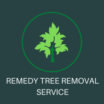Problem Prevention: First and foremost, you would do well to take a proactive approach to disease prevention. Growing disease resistant varieties is one big step in the right direction. However, resistance to one disease does not automatically mean complete immunity. Nor does it mean that the variety is resistant to all diseases. In most cases, some preventive protection is still in order. When measures are taken to protect newly emerging plant tissue from disease spores early in the growing season, it is very possible to short circuit the disease cycle or at least greatly reduce reproduction of spores that will lead to ever-increasing disease pressure. Early control can greatly reduce the need for additional sprays later in the season. It is well worth it to learn the cycles of disease development to stay ahead of the game.
Proper Identification: For many home gardeners, a small amount of fruit damage is acceptable. That fruit can often be used for jam and jelly, cider making, or other home preserved products. If your crop is being damaged and you have come to a point where you feel control is needed, your next step will be to properly identify the pest or disease. The two preceding chapters should be able to help you recognize the most common problems. Your local extension agent can often help identify more unusual localized problems.
Selecting An Effective Control: Once you have identified your pest, you will need to choose your control method from various options: cultural, mechanical, or chemical. Mechanical removal or a cultural practice may work for your situation. Alternately, you might choose some type of predator insect or microorganism. In some cases, control may involve some type of pesticide. Pesticide (-cide meaning “to kill”) is the term generally used to define a material that kills pests_ be it an insect, disease, or weed. These materials can generally be broken down into the categories of insecticide (to kill an insect), fungicide (to kill fungi responsible for many disease), bactericide (to kill bacteria), or herbicide (to kill weeds or “herbs”).
Choosing a strategy targeted specifically for the purpose of controlling your given problem is preferred in integrated pest management. A target specific material is often the most effective means of control and, if chosen properly, it will not be injurious to other desired insects that also inhabit your garden. Careful use of a selective pesticide can even be a valuable tool in letting beneficial insects gain control of a runaway pest population and bring it back into an ecologically balanced control situation.
Proper Timing: One key aspect of a successful pest or disease control program is applying the selected material at a time when it will be most effective. The importance of proper timing cannot be overstated! Even the most well chosen material will not work well if it is applied at the wrong time. You are already aware from that most insects are likely to be vulnerable to control when they are immature or unprotected. Diseases are usually easiest to control before the bacterial or fungal spores have colonized plant tissue or increased to great numbers. This may often be early in the season when plant tissue is just emerging and before disease symptoms are visible on the plant.
Since each growing season is different, it is impossible to say that a given spray applied on a given date will always work. General recommendations, correlated to the tree growth phases can be more reliable. As you keep records and gain experience, you will be able to fine-tune your timing. Keeping track of pest emergence, plant development, and growing degree days over time will offer you even more accurate predictions for timing insect and disease control methods. Pest emergence tends to correlate quite reliably with certain plant growth stages, while disease development is highly influenced by weather conditions and temperature. The charts show the critical control periods for the more common insect pests and diseases in the northern United States. In the South, the sequence will still be the same, but may occur several weeks earlier. Use them as a guide.





